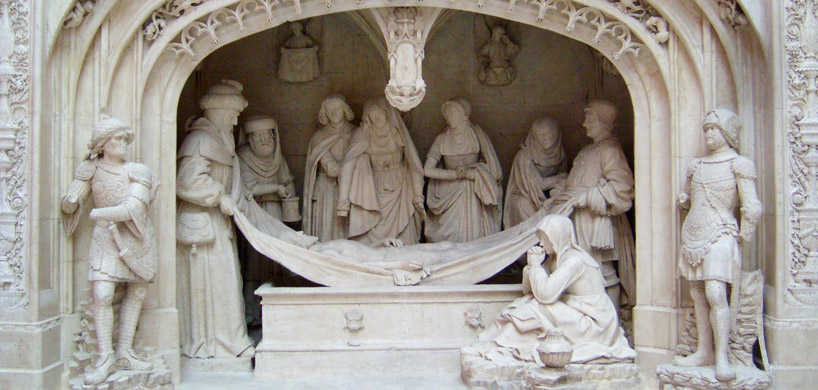France was the place where the greatest movements of Romanesque and Gothic sculpture were born. The simple and classical forms of Italian Renaissance sculpture replaced the Gothic style. During the 15th century, many of the feudal castles in France were transformed into chateaux of pleasure.
This gave rise to commissions for the new Renaissance-style sculpture. Many sculptors from the northern parts of Italy moved to France to benefit from this new demand. They settled in places such as Paris, Tours, and Fontainebleau. Tours were the first to exhibit the latest influence of the Italian Renaissance.
Among the most important sculptures created during this period was a relief sculpted by Michel Colombe. It was that of St. George and the Dragon. The relief was sculpted in 1508 for the Chateau de Gaillon’s high altar.
The Franco-Italian style of sculpture
In the 16th century, the Franco-Italian style of sculpture spread rapidly throughout France. This happened especially during the first half of the century. One of the biggest reasons for this was the vigorous support and patronage that it got from Francois I.
The great chateaux at St Germain, Blois, Fontainebleau, and Chambord were refurbished in the Franco-Italian style. Soon, it was used in the public buildings and private homes in Orleans, Tours, Toulouse and other places. This style of sculpture was also used for creating doorways, choir screens, altarpieces, and stalls in churches.
During the second half of the 16th century, the influence of Catherine de’ Medici increased. Gothic architecture was no longer dominant in structural forms. This period saw a greater Italian influence over French art.
Renowned sculptors of French Renaissance
Jean Goujon
He ranks among the greatest sculptors of the 16th-century French Renaissance. Much of his works were lost during the French Revolution. The ones that survived revealed a distinctive style. It is more evident in the decorations of Fontaine des Innocents in Paris that he created.
They are some of the finest examples of grace, delicacy, and sophistication. He is also famous for his decoration of the Louvre Palace. Goujon created the sculptural decoration by collaborating with the architect Pierre Lescot.
Germain Pilon
He is considered one of the finest French Renaissance sculptors. Pilon produced different types of sculptures using marble, bronze, wood, and terracotta. He was known for his medallist and portrait sculptures. One can find the influences of Fontainebleau school, Italian Mannerism, and Italian Renaissance in his works of sculpture.
By the mid-16th century, he was providing models for the goldsmiths of Paris. The influences of Renaissance art can also be found in his early works. His popular surviving works include the sculpture of the Tomb of Catherine de Medici and Henry II. Some of the best European art museums have also preserved his sculptures.
Barthelemy Prieur
He was one of the last Renaissance sculptors of France and a follower of Germain Pilon. Prieur was mostly active during the last three decades of the 16th century. His works mainly focused on portrait busts and funerary monuments.
The surviving sculptures of this sculptor can be seen in the National Gallery of Art, located in Washington DC. The small bronze statuettes were popularized by his creation of Giambologna. Among the other museums that have housed his surviving sculptures are Ashmolean Museum Oxford and the Louvre.


